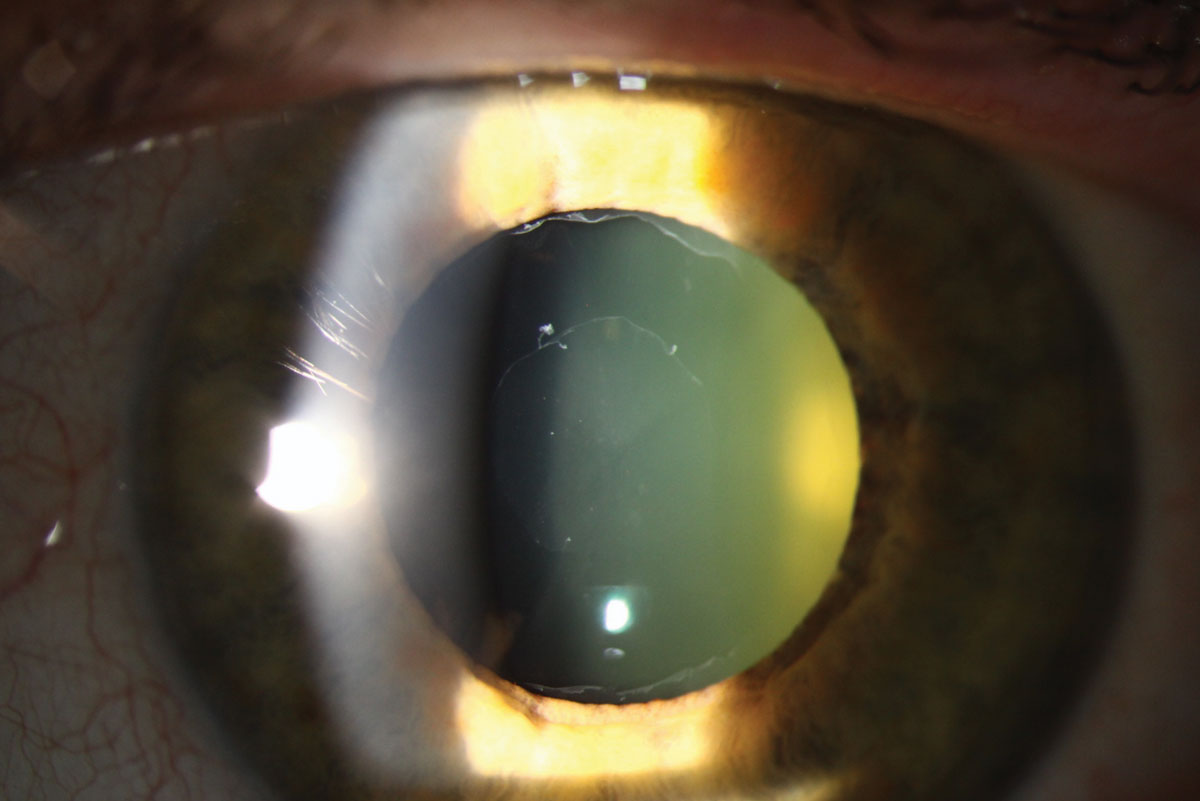 |
|
A recent study found that pseudoexfoliation was not associated with AMD. Photo: Christine Sindt, OD. Click image to enlarge. |
Typically affecting the anterior segment of the eye, pseudoexfoliation has a worldwide prevalence estimated at 0.2% to 30% in people older than 60. Researchers recently found that the prevalence of pseudoexfoliation increased significantly with age after 10 years of follow-up, but there was no significant relationship with any age-related macular degeneration (AMD) findings.
The team wanted to determine potential associations between pseudoexfoliation syndrome and ocular changes in an urban population and identify possible risk factors for the condition 10 years after baseline. The baseline examination was conducted in a random sample of 1,033 adult participants, of whom 631 had ophthalmic examination data at the 10-year follow-up. Mydriasis pseudoexfoliation was diagnosed by the presence of typical grayish-white exfoliation material on the anterior capsule surface of the lens. Patients were divided into groups with or without the disorder.
Pseudoexfoliation prevalence in these patients increased from 9.8% to 34.2% from baseline to the 10-year follow-up, with no significant difference between sexes, but with a significant increase with age. Nuclear cataract was common both in the pseudoexfoliation group (66.7%) and in those without (72.2%), but this difference did not reach a statistically or significantly increased risk of developing cataract in those with pseudoexfoliation. Central corneal thickness was thinner in the pseudoexfoliation group (529μm) and in the oldest group (525μm). Compared with baseline, corneal curvature became flatter in both groups (7.6mm vs. 7.7mm) during the follow-up, but the difference did not reach significance between groups. Corneal astigmatism was most commonly with-the-rule in both groups (50% vs. 68.5%). The researchers determined that age, sex and pseudoexfoliation had no influence on AMD distribution.
“Our results showed that detailed characterization of eyes with pseudoexfoliation and eyes without was beneficial in identifying trends in anterior segment changes,” the researchers concluded in their paper. “An appropriate clinical pathway is required to enable timely diagnosis and treatment of these patients in order to keep them active in society.”
Rumelaitiene U, Speckauskas M, Tamosiunas A, et al. Exploring association between pseudoexfoliation syndrome and ocular aging. Int Ophthalmol. September 21, 2022. [Epub ahead of print]. |

